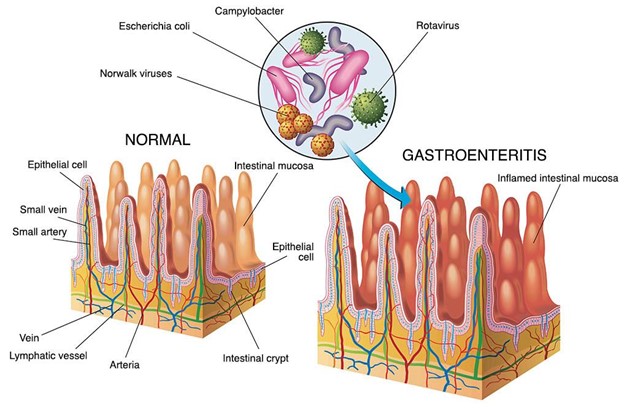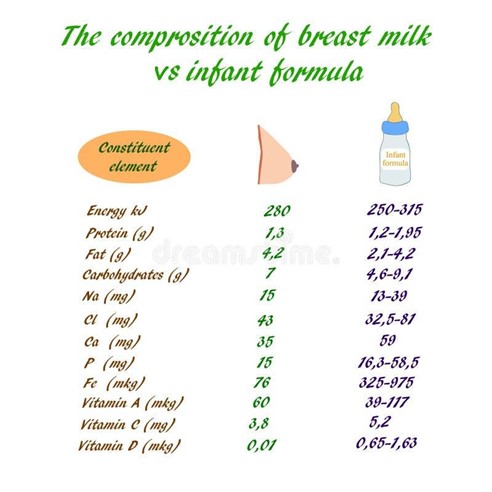Newborn Nutrition > Maternal & Newborn
Exam Review
Infant formula
Total Questions : 5
Showing 5 questions, Sign in for moreA nurse is teaching a new mother how to prepare powdered infant formula for her baby.
Which of the following instructions should the nurse include?
Explanation
Shake the bottle well to dissolve any clumps.
This is because clumps of powder can clog the nipple and make it hard for the baby to drink.Clumps can also cause inaccurate measurements of formula and water, which can affect the baby’s nutrition and hydration.
Choice A is wrong because tap water may contain harmful bacteria or contaminants that can cause infections or illnesses in the baby.Tap water should be boiled first and then cooled to kill any germs before mixing with powdered formula.
Choice B is wrong because one scoop of powder should be mixed with one ounce of water, not two.
Mixing too much water with the powder can dilute the formula and make it less nutritious for the baby.Mixing too little water can make the formula too concentrated and cause dehydration or kidney problems in the baby.
Choice D is wrong because leftover formula should not be stored at room temperature for more than one hour.
Bacteria can grow quickly in warm formula and make the baby sick.Leftover formula should be discarded or refrigerated immediately and used within 24 hours.
A client is considering switching from breast milk to soy-based infant formula for her 4-month-old infant who has a cow’s milk allergy.
What should the nurse inform the client about soy-based infant formula?
Explanation
It may increase the risk of developing peanut allergy later in life.According to a study published in the Journal of Allergy and Clinical Immunology, infants who were fed soy-based formula had a higher risk of developing peanut allergy than those who were fed cow’s milk formula or breast milk.
This may be because soy and peanut are both legumes and share some common proteins that can trigger allergic reactions.
Choice A is wrong because soy-based formula may causelessgas and bloating than cow’s milk formula, since it does not contain lactose, which some babies have trouble digesting.
Choice C is wrong because soy-based formula provides adequate iron and calcium for the infant’s growth, as well as other nutrients such as protein, fat, carbohydrates, vitamins and minerals.Soy-based formula is also fortified with iron to prevent iron deficiency anemia.
Choice D is wrong because soy-based formula does not interfere with thyroid function and hormone synthesis in healthy infants.However, infants with congenital hypothyroidism who are taking thyroid medication may need to adjust their dosage if they are fed soy-based formula, since soy can affect the absorption of the medication.
Therefore, these infants should be monitored closely by their doctor.
A nurse is assessing a 6-month-old infant who is exclusively fed with ready-to-use infant formula.
Which of the following findings should alert the nurse to a possible complication of this type of formula?
Explanation
Dental caries, also known as tooth decay or cavities, are a possible complication of ready-to-use infant formula.This type of formula is a liquid breast milk substitute that does not need to be mixed with water and is sterile and safe for babies.However, it may contain more sugar than powdered or concentrated formula and can cause tooth decay if the baby’s teeth are exposed to it for long periods of time.For example, if the baby falls asleep with a bottle of ready-to-use formula in his or her mouth, the sugar can pool around the teeth and erode the enamel.To prevent dental caries, the baby should not be put to bed with a bottle of formula and should have his or her teeth cleaned regularly with a soft cloth or a baby toothbrush.
Choice A is wrong because poor weight gain is not a complication of ready-to-use infant formula.This type of formula provides adequate nutrition and calories for normal growth and development of infants.Poor weight gain may be caused by other factors, such as illness, feeding difficulties, or inadequate intake.
Choice C is wrong because iron deficiency anemia is not a complication of ready-to-use infant formula.This type of formula is fortified with iron and can prevent or treat iron deficiency anemia in infants who are not breastfed or are partially breastfed.
Iron deficiency anemia may be caused by other factors, such as blood loss, infection, or low iron intake from complementary foods.
Choice D is wrong because constipation is not a complication of ready-to-use infant formula.This type of formula has a similar composition and consistency to powdered or concentrated formula and does not cause constipation in infants.
Constipation may be caused by other factors, such as dehydration, low fiber intake, or medication.
A nurse is caring for a 9-month-old infant who has diarrhea and dehydration due to gastroenteritis.
The infant’s mother asks if she can continue to feed her baby with liquid concentrate formula diluted with water.
How should the nurse respond?
Explanation
The nurse should advise the mother to stop feeding her baby with diluted formula and switch to undiluted formula or breast milk.This is because diluted formula does not provide enough calories and nutrients for the infant and may worsen the dehydration by increasing the osmotic load in the gut.Undiluted formula or breast milk can help maintain the infant’s nutrition and hydration status while also providing some protection against infection.
Choice A is wrong because diluted formula is not recommended for infants with diarrhea and dehydration, and oral rehydration solution (ORS) should be given in addition to, not instead of, breast milk or formula.
Choice B is wrong because oral rehydration solution alone is not sufficient to meet the infant’s nutritional needs and may lead to weight loss and malnutrition.ORS should be used to correct fluid and electrolyte losses, but not as the sole source of hydration.
Choice C is wrong because adding sugar and salt to diluted formula is dangerous and can cause serious complications such as hypernatremia, hyponatremia, hyperglycemia, or cerebral edema.ORS has a specific concentration of sugar and electrolytes that has been shown to increase the absorption of fluid and electrolytes in the gut.

A nurse is reviewing the label of a powdered infant formula with a parent who wants to know what ingredients are in it.
The nurse explains that most powdered infant formulas are made from modified cow’s milk or soy protein that contain added nutrients such as:
Explanation
Vitamins, minerals, and carbohydrates.Most powdered infant formulas are made from modified cow’s milk or soy protein that contain added nutrients such as proteins, fats, carbohydrates, vitamins, and minerals.Carbohydrates are usually from lactose, glucose, or corn syrup, and they supply calories and sweetness.Vitamins and minerals are added to meet the nutritional requirements of infants.
Choice A is wrong because antibodies, enzymes, and growth factors are not added to powdered infant formulas.These are components of breast milk that help protect the baby from infections and support digestion and development.
Choice C is wrong because hormones, probiotics, and antioxidants are not added to powdered infant formulas.Hormones are not needed for infant nutrition and may have adverse effects.Probiotics are beneficial bacteria that may help with gut health, but they are not required for infant formulas.Antioxidants are substances that protect cells from damage, but they are not added to infant formulas.
Choice D is wrong because fats, amino acids, and fiber are not added to powdered infant formulas.
Fats are usually from vegetable oils, and they provide energy and fatty acids

Sign Up or Login to view all the 5 Questions on this Exam
Join over 100,000+ nursing students using Nursingprepexams’s science-backend flashcards, practice tests and expert solutions to improve their grades and reach their goals.
Sign Up Now

